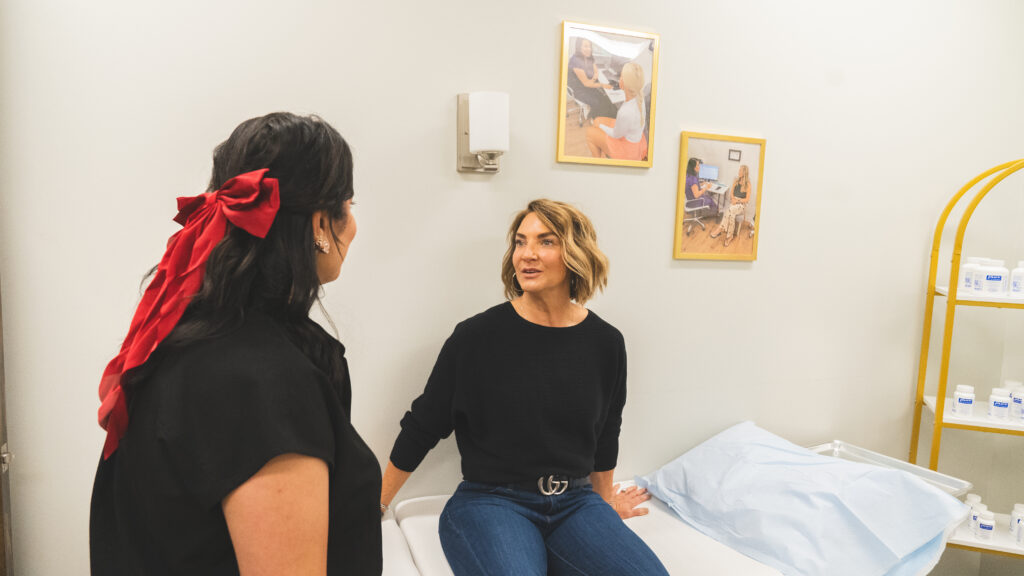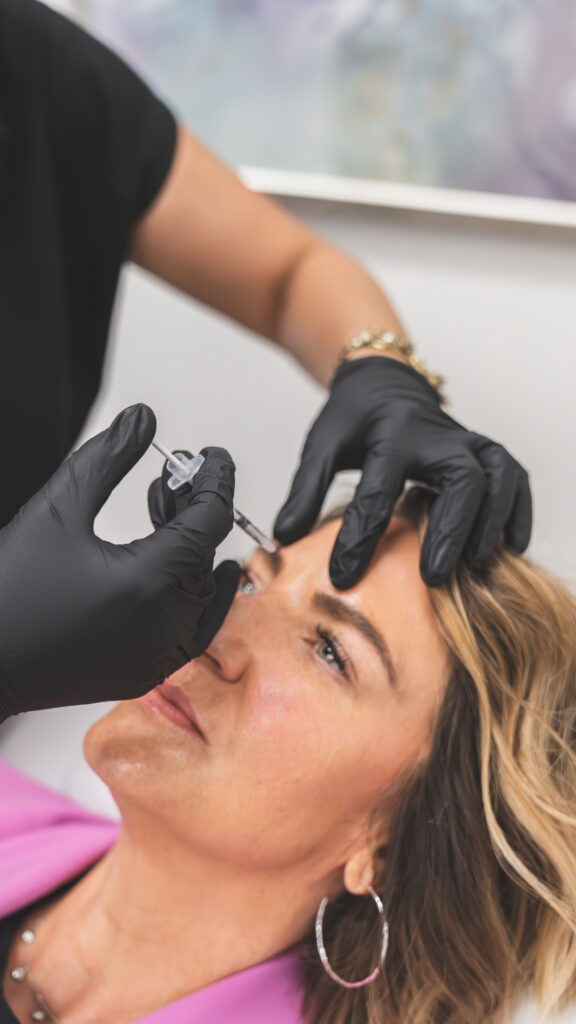Exosome Hair Restoration (EHR) offers an innovative approach to combating hair loss and achieving natural growth. By harnessing the potential of small extracellular vesicles called exosomes, this therapy stimulates hair follicles, promotes cell growth and enhances hair density. Ever wondered how they bring back your luscious locks? The science behind hair restoration is truly intriguing! So, let’s take a closer look at how this treatment can work wonders for your hair!
Learn About Hair Loss and Exosome Hair Restoration
Causes of Hair Loss
Hair loss, also known as alopecia, can be attributed to various factors. Understanding the underlying causes is crucial for identifying appropriate treatment options. Here are some common causes of hair loss:
Androgenetic Alopecia
Androgenetic Alopecia, according to the American Academy of Dermatology Association, is the most common cause of hair loss, affecting both men and women. It is often referred to as male or female pattern baldness and is influenced by genetics and hormonal factors.
Hormonal Imbalances
Hormonal changes can lead to hair loss. Conditions such as polycystic ovary syndrome (PCOS), thyroid disorders (hypothyroidism or hyperthyroidism) and hormonal fluctuations during pregnancy and menopause can contribute to hair loss.
Medical Conditions
Certain medical conditions, chronic illnesses and autoimmune diseases like alopecia areata, scalp infections (such as ringworm), trichotillomania (hair-pulling disorder) and underlying health conditions like iron deficiency anemia can trigger hair loss.
Medications and Treatments
Chemotherapy, radiation therapy, antidepressants, blood thinners and certain acne medications are examples of drugs that may lead to hair loss as a side effect.
Nutritional Deficiencies
Inadequate intake of essential nutrients — particularly iron, zinc, biotin and vitamin D — can impact hair health and contribute to hair loss. Poor nutrition and crash diets can also result in hair thinning and loss.
Physical and Emotional Stress
Physical stressors like surgery, major illness or significant weight loss can disrupt the normal hair growth cycle, leading to temporary hair shedding. Emotional stress, including traumatic events or prolonged psychological stress, can also contribute to hair loss.
Hairstyling Practices
Excessive use of heat styling tools (like straighteners and curling irons), tight hairstyles (such as ponytails or braids) and harsh chemical treatments (including perming and coloring) can cause damage to the hair shaft and lead to hair breakage and thinning.
Aging
The natural hair growth cycle slows down as we age, resulting in thinner and less dense hair. Hormonal changes and reduced blood circulation to the scalp can contribute to age-related hair loss.
It’s important to note that while exosome hair restoration shows promise in addressing hair loss, understanding the specific cause of individual hair loss is crucial for determining the most effective treatment approach. Consulting with a healthcare professional or a dermatologist can help identify the underlying cause and tailor an appropriate treatment plan for optimal results.
Role of Exosomes in Hair Restoration
Exosomes are tiny messengers secreted by stem cells and various cells in our bodies. They facilitate communication between cells and promote tissue regeneration. Picture them as small cargo ships carrying essential payloads. Inside these ships are growth factors, cytokines (proteins that regulate immune responses) and microRNAs — small molecules that control gene expression. In the context of hair restoration, these intercellular messengers deliver this potent cargo to the cells in hair follicles, stimulating them and promoting growth.
Benefits of Exosome Hair Restoration
Exosome therapy targets and delivers its growth factors and regulatory molecules to the hair follicles. Once these substances reach the cells, they trigger cell growth, encourage the formation of new blood vessels and boost collagen production. They create an optimal environment for healthy hair growth by reducing inflammation and improving blood circulation in the scalp. Simply put, these extracellular vesicles target common causes of hair loss and initiate rejuvenation within the hair follicles, leading to improved hair density and health.
In a peer-reviewed study published in Skin Med, researchers investigated the efficacy of exosomes in hair restoration involving patients with androgenetic alopecia. Results showed a visible improvement in hair density and thickness in the treatment group after 12 weeks. Furthermore, the study revealed that these patients reported no adverse side effects.
Another review of 16 studies, published in the Journal of Cosmetic Dermatology, explored the effects of exosome therapy in individuals experiencing hair loss. Researchers concluded from this review that there is increasing evidence suggesting the therapeutic potential of exosome therapy. Additionally, colostrum-derived exosome showed potential in accelerating hair regeneration comparable to minoxidil, a synthetic treatment for hair loss, according to a study published in Frontiers in Cell and Developmental Biology,
Extracellular vesicles cannot regrow hair in completely bald areas; however, they have shown remarkable success in stimulating dormant hair follicles and promoting hair growth in thinning areas. In the study issued by the Aesthetic Surgery Journal, EHR showed positive effects on reducing hair shedding or promoting hair growth in certain age groups. Factors like the duration and stage of hair loss, the number of exosomes used and the response to other hair growth medications played a role in determining the success of the treatment.
Length of Exosome Hair Therapy
The duration of exosome hair therapy depends on individual factors such as the extent of hair loss, underlying causes and overall health. While some individuals may observe noticeable improvements after a few sessions, others may require multiple treatments to achieve optimal results. Periodic touch-ups may be necessary to maintain the desired hair density and thickness.
 Ideal Candidates for Exosome Hair Restoration
Ideal Candidates for Exosome Hair Restoration
Exosome treatment holds promising potential for individuals who are seeking to address hair loss and rejuvenate their hair naturally. According to a study published by the Aesthetic Surgery Journal, the therapy can benefit the following groups:
Individuals with Androgenetic Alopecia
Exosome treatment offers a solution for both men and women experiencing this condition by stimulating hair follicles and promoting hair growth.
Individuals with Thinning Hair
Exosome therapy can enhance hair density and thickness through a non-invasive and effective solution for those who desire fuller and healthier-looking hair.
Individuals with Early-stage Hair Loss
Exosome treatment has shown greater success in individuals with shorter histories of alopecia, typically less than eight years. There is a higher likelihood of reversing hair loss and achieving noticeable hair growth in these cases.
Individuals Seeking Natural Alternatives
Exosome therapy taps into the body’s natural regenerative abilities, making it an appealing option for those who prefer natural approaches to hair restoration. It offers a safe and effective solution without the potential side effects often associated with invasive procedures or medications.
Individuals Who Have Not Responded Well to Other Treatments
For individuals who have tried other hair restoration treatments, such as minoxidil or finasteride, without significant results, exosome treatment may provide an alternative approach. Exosomes have been shown to enhance stem cell activities within the hair follicles, which can potentially lead to improved hair growth.
Individuals Looking for Long-lasting Results
Exosome treatment has the potential to yield long-lasting results. Many patients have reported hair growth and increased density between the third to sixth months of treatment and did not require booster sessions for up to a year.
Individuals Concerned About Immune Reactions
Exosomes offer a lower risk of immune system reactions following treatment compared to other therapies. It can be a suitable option for individuals who may be sensitive to certain treatments or have autoimmune conditions.
It’s important to note that the suitability of exosome treatment may vary depending on individual factors such as the extent of hair loss, underlying causes and overall health. Consulting with a qualified professional specializing in exosome therapy can help determine if it is the right option for specific individuals.
Exosome Hair Restoration Process
Consultation and Assessment
The journey begins with a comprehensive consultation and assessment. During this initial step, you’ll meet with a qualified professional who specializes in hair restoration. They will evaluate your specific needs, examine the condition of your hair and scalp and discuss your desired goals. This consultation is essential to determine if exosome therapy is the right option for you and to develop a personalized treatment plan.
Exosome Collection
Once you have decided to proceed with treatment, the next step involves the collection of exosomes. These powerful cellular messengers are sourced from mesenchymal stem cells, which are known for their regenerative properties. The stem cells are carefully obtained from an ethically approved source, ensuring the highest quality for the therapy.
Preparation and Application
After the collection, the cells undergo a meticulous purification and concentration process. This step ensures that the therapy is highly potent and contains a concentrated amount of growth factors, cytokines and microRNAs. The purified exosomes are then prepared for application.
The application of exosome therapy is typically done through a series of microinjections in the scalp. These injections are administered with precision, targeting specific areas of concern. The procedure is minimally invasive and well-tolerated by most individuals. Local anesthesia may be used to minimize any discomfort during the treatment.
Follow-Up and Maintenance
Following the EHR procedure, your healthcare provider will give detailed instructions on post-treatment care. It’s important to follow these guidelines to ensure the best possible outcomes. You may be advised to avoid excessive heat, sunlight or certain hair products for a specified period. Your provider will also schedule follow-up appointments to monitor your progress and make any necessary adjustments to your treatment plan.
Maintaining the results of the hair therapy may involve periodic touch-up treatments. Your healthcare provider will recommend the appropriate intervals based on your individual needs and response to the therapy. By adhering to the recommended maintenance schedule, you can maximize the long-term benefits of EHR.
Leawood Total Wellness Can Help Restore Your Hair
If you’re considering hair rejuvenation, Leawood Total Wellness is here to help. Our team of qualified professionals specializing in EHR can provide personalized treatment plans tailored to your needs. With our expertise and state-of-the-art facilities, we offer a comprehensive approach to revitalizing your hair naturally.
At Leawood Total Wellness, we understand the impact of hair loss on your confidence and well-being. Our commitment is to provide you with the highest care and support throughout your hair restoration journey. Schedule a consultation today and take the first step towards saying goodbye to thinning hair and embracing a fuller, healthier head of hair.
Embrace the opportunity to revitalize your hair naturally with Leawood Total Wellness. Regain your confidence and achieve the hair you’ve always desired.





